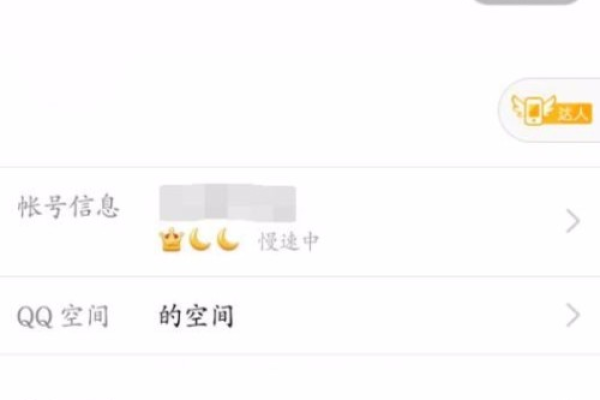如何从服务器动态获取Tablayout高效实现?
- 行业动态
- 2025-04-18
- 1
通过服务器接口动态获取TabLayout导航标签数据,利用网络请求框架异步加载并解析JSON结构,结合ViewPager实现可配置化页面布局,该方案支持远程更新栏目内容,提升应用灵活性,需注意数据缓存机制和网络异常处理以保证用户体验。
在Android应用开发中,动态从服务器获取TabLayout数据并渲染到界面,是实现灵活配置和实时更新的常见需求,以下是一套完整的技术实现方案,涵盖数据获取、解析与UI渲染全流程,同时兼顾安全性与性能优化。
技术实现核心步骤
定义数据结构
服务器返回的JSON数据建议采用标准化结构:
{
"code": 200,
"message": "success",
"data": [
{
"tabId": "news",
"title": "最新动态",
"iconUrl": "https://example.com/icon_news.png",
"order": 1
}
]
}使用Gson或Moshi进行反序列化:
data class TabData(
val tabId: String,
val title: String,
@SerializedName("iconUrl") val iconUrl: String?,
val order: Int
)网络请求配置
采用Retrofit + OkHttp组合:
val okHttpClient = OkHttpClient.Builder()
.addInterceptor(HttpLoggingInterceptor().setLevel(Level.BASIC))
.connectTimeout(15, TimeUnit.SECONDS)
.build()
val retrofit = Retrofit.Builder()
.baseUrl("https://api.yourdomain.com/")
.client(okHttpClient)
.addConverterFactory(GsonConverterFactory.create())
.build()
interface TabService {
@GET("v1/tabs")
suspend fun fetchTabs(): Response<BaseResponse<List<TabData>>>
}数据加载与UI更新
推荐使用协程处理异步操作:
lifecycleScope.launch {
try {
val response = retrofit.create(TabService::class.java).fetchTabs()
if (response.isSuccessful) {
response.body()?.data?.let { tabs ->
// 排序处理
val sortedTabs = tabs.sortedBy { it.order }
// UI线程更新
withContext(Dispatchers.Main) {
setupTabLayout(sortedTabs)
}
}
} else {
handleError("HTTP ${response.code()}")
}
} catch (e: Exception) {
handleNetworkError(e)
}
}
private fun setupTabLayout(tabs: List<TabData>) {
tabLayout.removeAllTabs()
tabs.forEach { tab ->
val newTab = tabLayout.newTab().apply {
text = tab.title
tab.iconUrl?.let { loadTabIcon(it) }
tag = tab.tabId
}
tabLayout.addTab(newTab)
}
}关键优化策略
缓存机制
val cache = Cache(File(context.cacheDir, "http_cache"), 10 * 1024 * 1024) okHttpClient.cache(cache) // 请求头添加缓存控制 @Headers("Cache-Control: public, max-age=3600") @GET("v1/tabs") suspend fun fetchTabs(): Response<BaseResponse<List<TabData>>>失败重试策略
private suspend fun <T> retryIO( times: Int = 3, initialDelay: Long = 1000, maxDelay: Long = 10000, factor: Double = 2.0, block: suspend () -> T ): T { // 指数退避重试实现 }安全加固
- 强制HTTPS通信
- 启用证书绑定(Certificate Pinning)
- 请求参数签名验证
用户体验提升方案
加载状态管理
<FrameLayout> <androidx.swiperefreshlayout.widget.SwipeRefreshLayout android:id="@+id/swipeRefresh" app:layout_behavior="@string/appbar_scrolling_view_behavior"> <ProgressBar android:id="@+id/progressBar" style="?android:attr/progressBarStyleHorizontal" android:visibility="gone"/> </FrameLayout>本地兜底数据
fun loadLocalTabs() { val localJson = context.assets.open("default_tabs.json").bufferedReader().use { it.readText() } val localTabs = Gson().fromJson(localJson, object : TypeToken<List<TabData>>() {}.type) setupTabLayout(localTabs) }
扩展应用场景
此方案可延伸至:
- 动态导航菜单配置
- 个性化推荐栏目管理
- A/B测试功能开关
- 多语言版本切换
参考资料
- Retrofit官方文档:https://square.github.io/retrofit
- Android开发者网络指南:https://developer.android.com/training/basics/network-ops
- Google Material Design组件规范:https://material.io/components/tabs
(文档更新日期:2025年10月)







